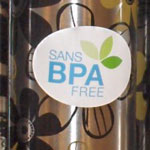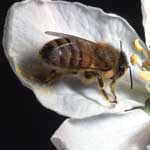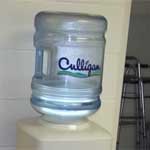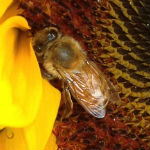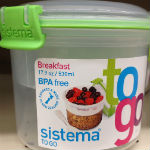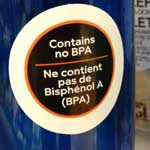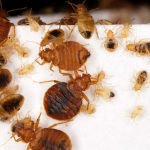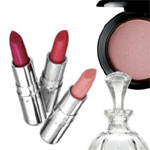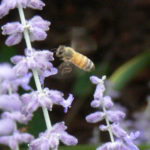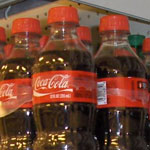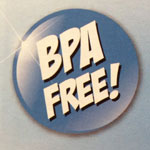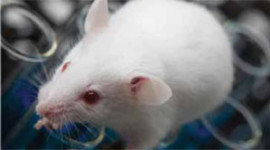"BPA Linked to Diminished Childhood Lung Function—in Bizzaro World," by American Council on Science and Health. A recent study examining the association between prenatal BPA (bisphenol-A) exposure and lung function has been making headlines, often with titles similar to “BPA linked to asthma.” However, the actual study is about as bad as they come. You can just as easily conclude anything about BPA exposure and lung function as you can who will win the All Star Game in 2019. The study, … [Read more...]
Perverse Consequences of Precautionary Ban of Neonics
"Agenda Based Precautionary Ban of Neonics Causes the Opposite of Its Intent," by American Council on Science and Health. British science journalist and author Matt Ridley (best known for his writings on science, the environment, and economics) has penned an op-ed published in The Times of London exposing the inanity and perverse consequences of the EU’s pet theory, The Precautionary Principle. Although some variants are less destructive and irresponsible than others, the main thrust of the … [Read more...]
No Harm to Frogs from Atrazine
"A New Study from Federal Geologists — AND Tyrone Hayes! — Shows no Frog Harm from Atrazine," by American Council on Science and Health. Look, there has never been any solid evidence at all that the most common herbicide (weed-killer) used in America — atrazine — actually harmed amphibians. On the other hand, atrazine has been estimated to have saved billions of dollars in increased corn crop yields over the many decades it’s been widely used in the corn-growing heartland. Nevertheless, since … [Read more...]
Unfounded Fears About BPA Plastic Containers
"Bogus Anti-BPA Research," by By Erik Telford. Based on reading trend articles and the little stickers affixed to Nalgene water bottles, one might readily conclude that BPA, the common acronym for bisphenol A, is the contemporary danger to public health that lead was half a century ago. BPA is a chemical used in the manufacture of many hard plastics and epoxy resins. When used in food packaging and containers, it helps to prevent spoilage, increases shelf life, and makes containers reusable. … [Read more...]
California’s Dangerous Plastic Bag Ban
"California Bans Single-Use Plastic Bags," by American Council on Science and Health. This past Tuesday, Gov. Edmund G. (Jerry) Brown Jr. signed a statewide ban on single-use plastic bags in grocery and convenience stores, making California the first state to ban plastic bags. The law will take effect in July 2015, when plastic bags will be phased out of stores and supermarkets including Wal-Mart and Target. Retailers are also allowed to charge a 10 cent fee for using paper bags. Plastic bag … [Read more...]
Seattle’s Pesticide Ban Won’t Help Honeybees
"Seattle's Action on Honeybees Scientifically Calibrated to Help Politicians, Not Bees," by Todd Meyers. Environmental policy provides numerous examples where trendy politics and ignorance trump sound science. The City of Seattle's latest action to protect honeybees is just the latest example. Taking a step called "very conservative," the City of Seattle announced it will no longer use a class of pesticides called neonicitinoids. The resolution, which is boilerplate language from other cities, … [Read more...]
BPA Exposure Levels Too Low to Worry About
"Million Here, Million There for BPA: Politicized Research Marches On," by BiomonitoringInfo.org. An article in The Hill’s Congress Blog confirms what many of us who have been following the scientific literature have observed: Research spending on bisphenol A (BPA), including biomonitoring studies, has increased dramatically in recent years. BPA research frequently claims health effects from chemical exposure. As Mattie Duppler writes in “Millions for ‘pointless’ research” on Congress Blog, … [Read more...]
Deborah Blum’s Hype About Trace Chemicals in Water
"Ho Hum. Blum is Glum," by American Council on Science and Health. Screen Shot 2014-09-26 at 12.53.41 PMHere she goes again. Deborah Blum couldn’t resist bemoaning the state of our environment—this time, trace chemicals in water. In her New York Times Sept 25th blog, “A Rising Tide of Contaminants,” Blum seems to be trying to convince us that we are drinking pure poison. If followed to its logical conclusion, one might wonder why anyone is still alive. Blum’s piece is based upon studies by … [Read more...]
Millions of Taxdollars Spent to Fund BPA Hysteria
"Millions for 'Pointless' Research," By Mattie Duppler. The House and Senate are currently scheduled to be in session together only 12 days before recessing to campaign for the November elections. This gives lawmakers little time to address even the most urgent policy issues. To avert another government shutdown, however, Congress must pass legislation to authorize funding for the next fiscal year, which begins October 1. It is expected that a stopgap measure will be used to kick the issue … [Read more...]
Fracking, Water Quality, and Health
"Water Pollution Not from Fracking, It Seems — Neither are 'Health' Effects," By American Council on Science and Health. This week’s New York Times has a report from a group based at Ohio State University which found that water contamination by methane and other hydrocarbons, even in areas where hydraulic fracturing of shale and horizontal drilling — the technologies known as “fracking” — is occurring is not the result of the process itself, but rather from well leaks. Read more. Watch the … [Read more...]
EWG Calls for “Actual Science” Instead of Rhetoric, But …
“Rhetoric is no Substitute for Actual Science and Hard Evidence," By SafeFruitsandVeggies.com. Ironically, this is a quote from an Environmental Working Group (EWG) blog today. And we couldn’t agree more. Yes EWG, science and evidence should take precedence over baseless rhetoric. So stop using scary rhetoric to mischaracterize risk when it comes to pesticide residues on produce in direct contrast to the “actual science and hard evidence.” So let’s review the science. Read more. … [Read more...]
Tribute to a Great Leader: Dr. Elizabeth Whelan
"A Tribute to Dr. Elizabeth Whelan, 1943-2014," By American Council on Science and Health. It is with deep and profound sadness that we announce that Dr. Elizabeth M. Whelan, the founder and president of the American Council on Science and Health since its beginnings in 1978, passed away yesterday. Beth was a giant in the annals of public health. With postgraduate degrees from Yale and Harvard, she grew increasingly frustrated with the discrepancy between what she knew to be fact-based … [Read more...]
BPA Science
"Trust Robust Science, Don’t Blame BPA", By BPA Coalition. The exposure of a fraud who stoked BPA fears to advance his career should remind us all to trust robust science from authoritative sources. On September 10, NBC News in the United States revealed that Anoop Shankar, a researcher at West Virginia University, had fabricated his qualifications to obtain his position and also allegedly altered his research findings. This is of particular interest for the BPA Coalition because several of his … [Read more...]
Deborah Blum’s “Poisoned Pen”: BPA Hype
"The Raging Controversy Over BPA Shows No Signs Of Abating," by Geoffrey Kabat (STATS). But that doesn’t mean that the two opposing sides have equal merit. In her “Poison Pen” blog in last week’s New York Times, the science writer Deborah Blum calls attention to new research that raises alarming questions about adverse effects on the female reproductive organs from exposure to BPA (bisphenol-A). Her article is titled, “In Plastics and Cans, a Threat to Women.” Blum described work by Jodi Flaws, … [Read more...]
Dutch BPA Investigation: Current Science Indicates Low Risk
"Dutch Public Health Institute ‘State of Knowledge’ on BPA: Not a Risk," By BPA Coalition. The news about bisphenol-A (BPA) continues. Last week, the Netherlands’ National Institute for Public Health and the Environment (RIVM) issued Part 1 of its investigation into BPA. RIVM’s report did not evaluate or cite specific studies but summarizes conclusions from earlier evaluations. Part 1 “gives an overview of the state of knowledge about BPA”. The institute’s appraisal of the available information … [Read more...]
Scaremongering, BPA, and the New York Times
"Canned Threat to Women’s Health: Teal Threat is Needless Anxiety via The Times," By American Council on Science and Health. One of the N.Y.Times’ stable of scaremongers regarding common chemicals in the environment unleashed another toxic tirade last week. Hijacking Tara Parker-Pope’s “Well” column, as she is allowed to do every so often, Deborah Blum — whose expertise is in science writing, as distinct from actual science — used her “Poison Pen” space to attack BPA (bisphenol-A). She should … [Read more...]
Josh Bloom Interview: Pesticides and Bedbugs
"Bedbugs of Manhattan Government's Role in the Urban Scourge,"By James Freeman. Why do bedbugs keep showing up in the greatest city in the world? It turns out that human error is as much to blame as the resilience of the six-legged critters. Recent bedbug discoveries in New York City's subway system and in the midtown Manhattan offices of Pacific Investment Management are only the latest chapters in a long, creepy story for Gotham residents. And even if recent incidents don't approach the worst … [Read more...]
Fear of Parabens in Cosmetics is Unwarranted
"Fear of Parabens Compromises Safety of Certain Cosmetic Products," By American Council on Science and Health. Parabens are commonly used in foods and cosmetics as preservatives. Back in 2004, Dr. Philippa Darbre of the University of Reading published a study reporting that many breast cancer tumors contained parabens. This study resulted in an unwarranted fear of parabens based on the claim by Dr. Darbre that these preservatives have estrogen-like activity which has been linked to breast … [Read more...]
Pesticide Bans Doing Harm Rather than Good
"EPA Pesticide Bans Threaten You and the Economy," By By Alan Caruba. When Rachel Carson’s book, “Silent Spring”, was published, filled with totally false claims about DDT, the Environmental Protection Agency looked it over and concluded she had used manipulated data. They concluded that DDT should not be banned, but its first administrator, William Ruckleshaus, overruled the agency and imposed a ban. ... I cite this history from the 1970s because most people believe that the EPA operates on … [Read more...]
School Kids, Caulk, and PCBs
"Are Kids Eating Window Caulk?" By Julie Gunlock. Well known cover girl Cindy Crawford is pulling her kids out of their Malibu school because routine soil tests on the school grounds found elevated levels of a chemicals called PCBs in window caulking in the class rooms. PCBs were banned by Congress in 1976 after it was revealed they could cause cancer and harm the immune and reproductive systems. Over the years, schools have been instructed to remove the caulking around windows if the schools … [Read more...]
Hype about Window Caulk and PCBs
"When There Is A Penis Mystery, Just Blame Endocrine Disruptors," By By Hank Campbell. Cindy Crawford says polychlorinated biphenyls (PCBs) will cause her son not to reproduce. She hasn't gone full-on Jenny McCarthy or anything, but there's never been a single study to find PCBs in window caulk can be an endocrine disruptor. There haven't been PCBs linked to reproductive issues at all, except in cases where animals in labs have been subjected to surfactants and gavage dosing of the stuff - the … [Read more...]
Kids at Risk from Window Caulk–Not
"Cindy Crawford Attacks PCBs but Doesn’t Have the Facts Straight," By American Council on Science and Health. Polychlorinated biphenyls (PCBs) are a class of chemicals that were commonly used in electrical insulation and may be found in the window caulking of older buildings. Well-known supermodel, Cindy Crawford, is now taking issue with the presence of PCBs in the window caulking at her children’s school and has decided to homeschool her kids to avoid them. Crawford says, “I look 10 years … [Read more...]
Chemist Speaks Out on BPA
"Another Organic Chemist Weighs in on BPA," By American Council on Science and Health. Regular Dispatch readers will know that we have discussed BPA—perhaps the poster child of the anti chemical movement— until we are blue in the face (BTF?). So, it is always nice to know that there are others out there who really understand this topic and agree with us scientifically. One of these is Steve Hentges, Ph.D., who currently holds the position of Executive Director of the Polycarbonate/BPA Global … [Read more...]
FDA Goes After Caramel Coloring
"FDA Tackles a Non-Issue: The Case Against 4-MEI in Caramel Coloring," By American Council on Science and Health. Last winter Consumer Reports came out with a relatively new scare — concerns about a chemical in cola drinks, and other foods with some forms of caramel coloring. The chemical in question is 4-MEI, an abbreviation for 4-Methylimidazole, produced as a byproduct of the manufacture of caramel. We have written about this pseudo-problem in the past, and like most chemophobia, this one … [Read more...]
“BPA Free” Now Under Attack
"Meet BPA-Free, The New BPA," By Steve Hentges. There’s an emerging trend, of late, in the seemingly endless saga of the chemical bisphenol A (BPA), which is most commonly used to make polycarbonate plastic and epoxy resins. Although the BPA saga has not yet become completely passé, much of the attention that had been given to BPA is now focused on alternatives to BPA. Indeed, it seems that BPA-Free is becoming the new BPA. For what seemed an eternity, BPA had been at the center of a perfect … [Read more...]
